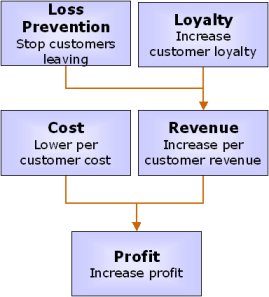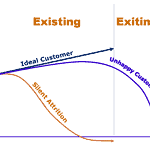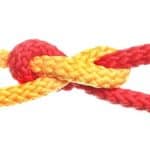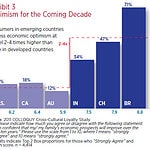Many companies would like to improve their customer retention but are unsure how to make the changes in their business to improve this important profit lever.
Identify Customer Retention Drivers
The first step in implementing customer retention programs is to identify the customer retention drivers. Without first identifying the retention drivers you run the risk of blindly implementing a range of programs which may or may not impact customer retention.
So let’s go back to basics and identify some of the retention related drivers that are going to support the achievement of greater profits for your company.
Identifying drivers always starts with outcomes, in this case profit. Profit increases are driven by both increasing revenue (assuming positive gross margin) and lowering overall costs (assuming no loss in revenue). This seems simple, and it is, but it gives us the first two retention drivers: Increased revenue per customer and lowered cost per customer.
Examining each of these primary drivers we also discover two secondary drivers.
It is reasonably obvious that preventing customer loss drives increased revenue. However, it is also true that improving customer loyalty drives both increased revenue and lower costs through the ability to get to know the customer better and align your company business processes to their needs.
This leaves us with four fundamental drivers of customer retention:
- Improving Customer Loyalty
- Preventing Customer Loss
- Lowering Overall Costs
- Increasing Total Revenue

Now the drivers have been identified let’s examine how they can be affected:
Improving Customer Loyalty
Improvement in loyalty can equate to significant increases in profitability as customers stay longer with your company and it becomes more difficult for your competitors to lure them away.
Customer loyalty is driven mainly by a combination of delighting your customers, educating them, having effective complaint resolution and high service quality.
From a company perspective, this means that you need to deliver on your promises. This can be done by exceeding customers’ expectations and occasionally rewarding them for their continued patronage.
Regarding complaints resolution; complaints and negative customer feedback need to be followed up with the customer and the issues resolved to the customer’s satisfaction. It is common to hear of the same customer issues occurring without a company taking action to resolve the problem or fix the source of the complaint. Don’t let this happen to you.
Loss Prevention
Loss prevention is a critical element that is driven by attrition management and win back success. Attrition management entails anticipating when customers are likely to defect and managing proactive initiatives to stop the defection. This has a direct impact on preventing revenue loss.
Alternatively, winback is the process of retaining a customer that has stated that they no longer want your product or service. Implemented correctly this can be an excellent way to prevent revenue loss. However, it needs to be implemented carefully; with a full knowledge of the customer’s profit to the business and the costs of the save offer. Otherwise, you can spend more saving a customer than they will inject into in future profits.
Cost Reduction
Effectively managing customer touch points is a key way to minimise the cost to serve and communicate with your customers. Managing touch points is the process of examining the media and timing of customer contact to optimise it for impact and cost.
Organisations that successfully manage touch points know when and how to contact their customers so that they maximise each contact opportunity. As a result money is not wasted on unnecessary contacts and the lowest cost applicable media is used.
Increase Revenue
Finally, there are the drivers that increase revenue. These are upsell and cross sell. When customers are encouraged to take up more products through cross sell, or upgrade their current product plans, revenue from these customers will increase.
We’ve talked about upsell and cross sell previously in this column so we won’t add more to it here.
Now you’ve identified the drivers for retention you can start to examine how to improve them and the outcome; customer retention. At this point we’ve returned full circle to where we started; we’ve identified ways to help improve customer retention and thus increase profits. Here’s where the rubber hits the road and it’s up to you to implement.
I've created an Excel Customer Lifetime Value Calculator: Download Here








